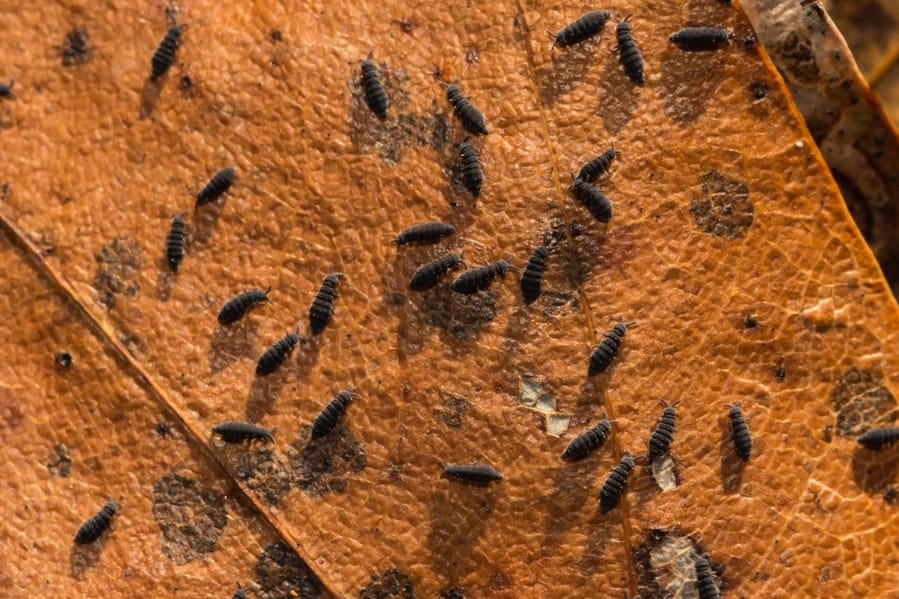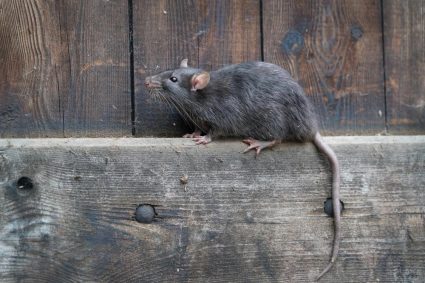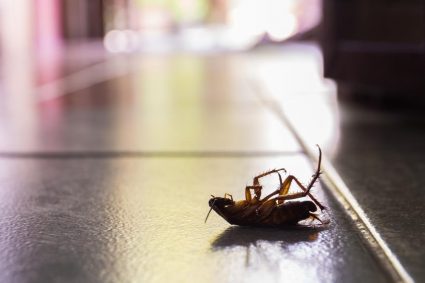
Fleas and springtails are similar animals that are often mistaken for each other. This is because they exhibit identical jumps and physically look alike. But, it is essential to tell them apart.
Below, we will go over some significant differences between springtails and fleas. There are other more minor differences that most people overlook, but we will point them out in this guide.
While there are several similarities between springtails and fleas, they differ in the following ways:
- Appearance
- Disease transmission
- Habitat
- Diet
- Characteristics and benefits
The following sections will discuss five distinct distinguishing factors between springtails and fleas. Afterward, we will answer other common queries about these pests.
5 Differences Between Springtails and Fleas
Let’s consider the differences between springtails and fleas:
1. Appearance

Springtails get their unique name from the extended attachment peeking from their abdomen. This fork-like appendage, called a furcula, helps the creature jump forward every time it moves.
On the other hand, fleas have muscular legs instead of furcula to project them forward and into the air. These muscled legs allow them to cover long distances despite their small size.
Another distinguishing factor is the color difference. While fleas are distinct reddish-brown insects, springtails come in various colors. Some species are plain black, grey, or brown. Others appear white, orange, yellow, green, or red.

Fleas have a flattened appearance that enables them to slither through their host’s fur undetected. Their rigid bodies further make it almost impossible to crush them to death. However, springtails are softer, with a rounder appearance, making it easy to crush them.
To better identify springtails, look for their unique antennae, as springtails have visible antennae, unlike fleas.
Although both pests have six legs, springtails are generally smaller than fleas. They can grow to about 1/16 of an inch long, while fleas measure about 3mm on average.
2. Disease Transmission

Fleas are biting insects and can infest their host animals with diseases through their bites. Some common signs of a flea infestation are scratching, biting, and visible hair loss.
Flea bites appear like tiny red dots on human skin around the legs and feet. While these bites may activate an allergic reaction, they do not cause serious health damage. However, like animals, human victims may experience intense itching, skin redness, and hair loss.
Springtails, however, do not bite only but also make their host uncomfortable. Therefore, the chances of them spreading diseases are very low. Instead, springtails in a house may indicate a severe building services issue, like faulty plumbing.
3. Habitat

Springtails live in soil but can be found in other places with strong moisture content. These include flowerbeds, woodpiles, leaf molds, and under landscape stones.
When the outdoors is too dry, springtails may migrate indoors to find more humid environments. As a result, you are likely to see them in kitchens, bathrooms, basements, or anywhere there are likely plumbing leaks.
Fleas can survive in almost every environment. However, they thrive more in shady and moist areas.
4. Diet

Fleas are blood-sucking pets with piercers that allow them to bite their victims. Thus, they feed on blood from warm-blooded animals. Springtails eat fungi, algae, decaying organic matter, and pollen.
Although non-human animals are a significant food source for fleas, they can bite humans to feed on human blood.
5. Characteristics and Benefits

Springtails prefer to move around at night. They hide in dark spots during the day. Fleas are more active regardless of the time and place.
Although primarily considered pests, springtails are beneficial to the ecosystem. Since they feed on decaying organic matter, they help recycle it, cleaning the ecosystem.
This provides sufficient nutrients for plants and helps with improving soil structure. Springtails also help pollinate mosses and eat the microbes causing most plant diseases.
However, unlike springtails, fleas have no known benefits and are dangerous pests.
Why Are Springtails and Fleas Mistaken for Each Other?

As we established earlier, springtails and fleas have similar coloring and appearances with a few distinguishing factors. However, these distinct factors are not often visible to the untrained eye.
Thus, it is common to mistake one for another, and here are a few reasons for this. For starters, both pests hop alike, and without knowing what a furcula is, it is easy to mix them up.
Then, both pests often appear in homes with pets, although springtails are drawn to the excess moisture in the house. Fleas, however, depend on these pets for food and to lay their eggs.
How Do Fleas and Springtails Enter Homes

Springtails slip into homes through exterior cracks, and their major attractant is damp conditions like overwatered plants. On the other hand, fleas depend on animal carriers to bring them into homes in their fur.
Although rodents can invite fleas into a home, pets like cats and dogs are the most famous culprits. That is why anti-flea products marketed for pets often create an effective defense against a flea infestation.
How To Deter Fleas and Springtails From Homes

A flea infestation may take months because fleas are difficult to eliminate, as they have a long lifecycle. However, the United States Centers for Disease Control and Prevention (CDC) proposes some basic steps to manage the problem.
The first step is sanitation, which involves cleaning breeding areas like pet bedding and rugs. Follow this up with vacuuming floors and carpets, especially those closer to walls.
Then, treat all household pets by washing them in flea control products or soap and water. The soap is a mild insecticide that can kill off adult fleas.
Use a flea comb while doing this, and focus on the head, neck, and tail regions. Start pet treatments at the same time as home sanitation and conduct follow-up treatments after five days.
Remove moisture and stagnant water sources, fix leaky pipes, and caulk exterior cracks to eliminate springtails. Since springtails thrive in dirt and decaying matter, clearing excess vegetation can help to prevent an infestation.
If you have a pool, use a pool cover to prevent springtails from drowning and floating on the water’s surface. While not in use, drain the pool to clear stagnant water or fit it with a filter to control pests.
Conclusion
Although springtails and fleas exhibit many differences, they have one thing in common – nobody wants them in their house. As a rule of thumb, springtails are outdoor pests, while fleas latch onto animals to find their way inside.
Understanding their behaviors and characteristics can help you better deal with these pests. The above captured the significant distinguishable differences between springtails and fleas.
To recap, both differ in appearance, habitat, diet, disease transmission, and characteristics and benefits. For more information, read the FAQs below.
Frequently Asked Questions
How Many Species of Fleas Exist?
Fleas are popular insects with about 700 unique species.
Is It Easy To Manage a Flea or Springtail Infestation at Home?
Fleas and springtails are some of the most problematic pests to eliminate in the yard or house. So, we recommend calling an exterminator once you notice signs of an infestation.











